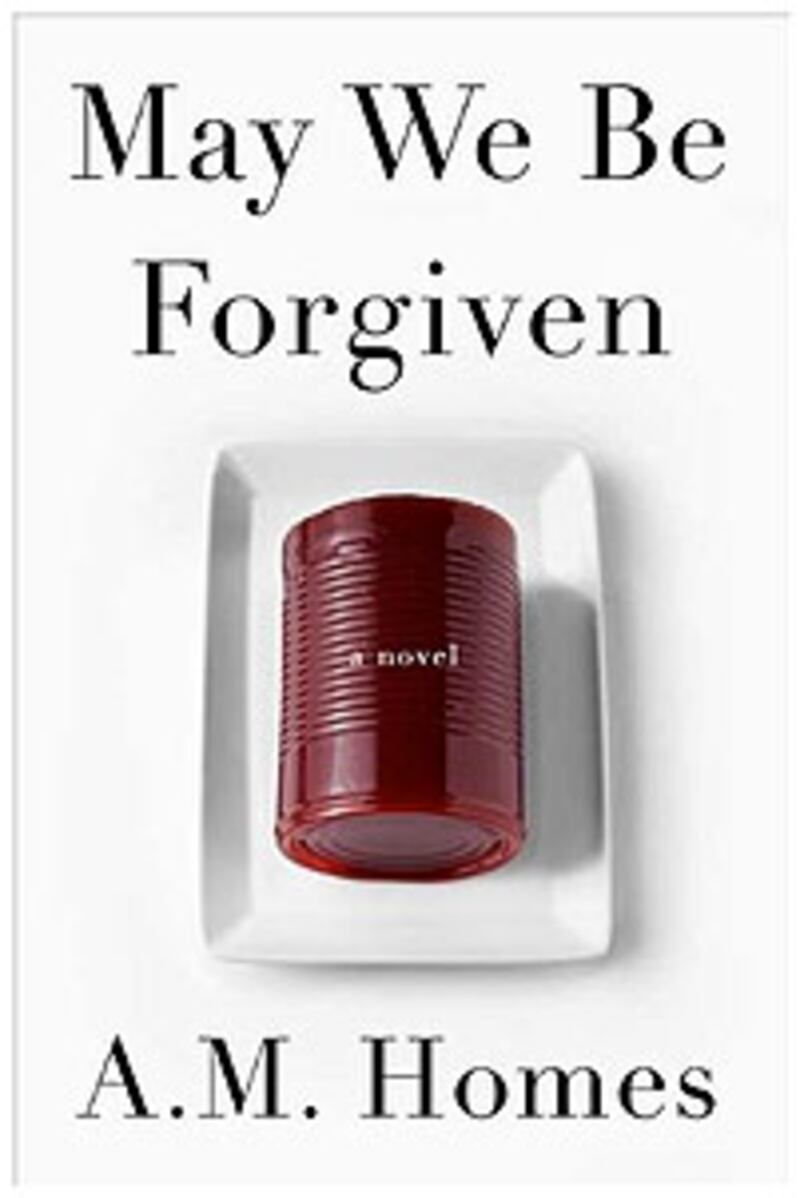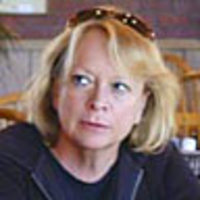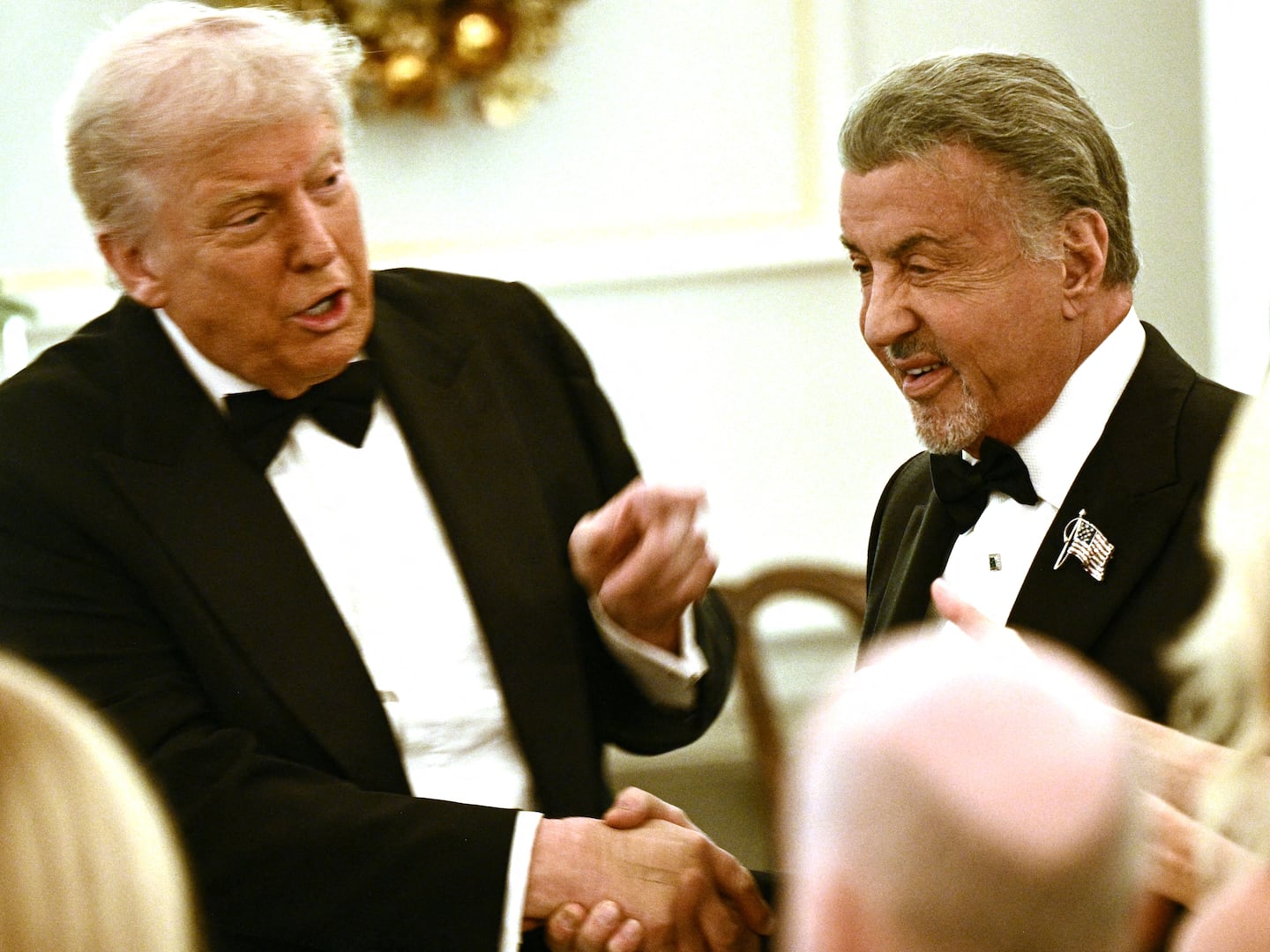A.M. Homes has built a literary career writing fearlessly and fiercely about splintered families and the damage done by divorce, adoption, and child abuse. She began exploring the fraught relationship between siblings in her last novel, This Book Will Save Your Life, and then with greater intensity in “Brother on Sunday,” a short story she wrote for the painter Eric Fischl and published in The New Yorker in 2009.
The sibling rivalry in her new novel, May We Be Forgiven, sizzles from the first page, when her narrator, Harold, describes Thanksgiving dinner at his younger brother George’s house: “He was at the head of the big table, picking turkey out of his teeth, talking about himself. I kept watching him as I went back and forth carrying plates into the kitchen ... With every trip ... I hated him more.”
George, the “bad” brother, is a cocky TV-industry executive with an explosive temper. Harold, the “good” older brother is a self-effacing historian and Nixon scholar with a university teaching gig. Three months after Thanksgiving, George runs a red light, killing two people in a minivan, refers to himself as a “dangerous man,” and ends up in a psych ward for observation. He escapes late at night and finds Harold in bed with his wife, Jane. His violent reaction leads to her death. (No spoilers here; this is just the first 14 pages.)
The literary seeds to the novel, said Homes, go back to her love of John Cheever’s short story “Goodbye My Brother” and Falconer, his 1977 novel of a professor, husband, father, and drug addict called Zeke Farragut, in prison for murdering his brother. “Cheever has always been a key author for me—also with regard to this book Norman Mailer’s Harlot’s Ghost and the work of Joseph Heller. Within my own work a fictional precursor is the short story “The Chinese Lesson”—from Things You Should Know—which is in some ways the prototype for the characters of Harry and Claire, his wife.”
May We Be Forgiven covers a year in which the brothers’ lives are upended. George winds up in a series of institutions based, Homes said, on “high-end mental hospitals like Silver Hill in Connecticut, and McLean Hospital in Massachusetts. I conflated these with places I love like Yaddo, where I do a lot of writing—and one feels tended to, cared for in a way that’s hard to come by as an adult. And also I thought of places like Canyon Ranch Spa and The Point, a former Rockefeller family retreat on Lake Saranac—very far upstate New York and otherworldly in terms of luxury.”

Harold inhabits his brother’s life—lives in his Westchester, N.Y., house, fathers his 12-year-old son, Nathaniel, and 11-year-old daughter, Ashley, takes care of his pets, gets involved in Internet sex—and becomes less isolated, more engaged.
For years, Harry has been working on a book about Richard Nixon (his suitably academic-sounding working title: “While We Were Sleeping: The American Dream Turned Nightmare—Richard Nixon, Vietnam, and Watergate: The Psychogenic Melting Point”).
“The Nixon theme dates back to my childhood in Washington, D.C.,” Homes said. “Nixon was the first president of my ‘conscious’ life—we used to see his daughters shopping for shoes in the local Saks Fifth Avenue. Watergate unfolded during my early adolescence and was a source of a lot of conversation.”
Homes did a lot of Nixon research, she said, reading books by and about Nixon and visiting the Nixon library in Yorba Linda, intrigued by the fact that “new” information about the Nixon presidency continues to be released as more of the “White House Special Files,” which were seized by the government, continue to be released. When Harold loses his university job, he is engaged by Nixon’s daughter Julie to go through a previously unknown file—short stories Nixon wrote in private. (Homes carries off her fiction-writing Nixon with deadpan wit.) Homes also weaves a series of literary cameos into the novel. What inspired her to include among the real people in the novel Don DeLillo, Lynne Tillman, and David Remnick? (The New Yorker editor calls Harold to ask about the previously unpublished Richard Nixon short story he has submitted for publication.)
“Lynne Tillman is a friend. She’s one of my favorite writers and about the smartest, kindest person in the world. A couple of years ago, out of the blue in a magazine, I saw a full page ad that simply said, ‘What Would Lynne Tillman Do?’ I thought it was amazing, so I kind of went from there. Don DeLillo I admire enormously for his blending of fiction and history, which has become increasingly important to my own work—in some ways May We Be Forgiven is a kind of a tip of the hat to someone I think of as a master. And David Remnick, well, come on, he’s adorable.”
How did she make this book, which deals with as many serious subjects as her previous work, so funny?
“I think in order to be serious, one must be funny; otherwise the seriousness will weigh you down. And much of life is very serious. Everyday life has gotten so absurd and difficult and in many ways unreal that I think it’s important to work to find the connections and to find the humor. My last novel, This Book Will Save Your Life, is also kind of ‘funny,’ but my mother, who is 86, says that she thinks that it was so close to ‘real’ that people didn’t get the satire. This time the absurdity and the darkness is pushed out a bit further—so hopefully people will feel comfortable laughing.”






